STEM Skills and the future of work
- Emma Godwin
In September 2021, roughly 45% of jobs filled in Aotearoa were in STEM-related fields. These jobs span a diversity of work across healthcare, engineering, technology, design, computing, agriculture, and more. In fact, STEM is one of the fastest-growing areas of work. There are predicted to be many STEM jobs in the future that haven’t even been invented yet!
So what exactly is STEM? It stands for Science, Technology, Engineering and Maths. However, STEM isn’t just about taking those subjects at university and becoming a scientist or a doctor. It is about developing skills and capabilities to think critically, analyse information, problem-solve and innovate. People use STEM skills every day. For example, to prepare a weekly budget, create a digital CV or edit a TikTok video. Knowledge of STEM is also critical for understanding the world around us and making informed decisions. It helps us decide whether a flu vaccine is safe or how compound interest affects our credit card debt.
In short, STEM skills can prepare young people for an increasingly complex and interconnected world, where we rely on scientific information and technology to do our jobs and go about our daily lives.
Forecasts estimate that 80% of future jobs will require maths and science skills. STEM-related jobs are also in demand globally, providing significant opportunities for living and working overseas. In general, jobs in STEM-related fields pay more than many others. That is because these jobs tend to be in high-tech industries or employers are willing to pay more because talent is in high demand.
Young people who engage in STEM today are going to be at a huge advantage in the future. They will likely have more and better job opportunities. This, in turn, will contribute to more wealth and prosperity for themselves and their whānau.
The STEM Alliance: supporting youth into STEM education and careers.
The education and business sectors need to do more to engage young people in STEM and inspire them into STEM career pathways. Currently, both participation and achievement in STEM are in decline in Aotearoa. Unfortunately, many students struggle with science and maths from an early age and then drop out in favour of “easier” subjects. Representation is also a problem. Many young Māori and Pacific Island students simply don’t see relatable STEM professionals. Subsequently, they don’t believe or realise that a STEM career can be for them.
These equity and engagement challenges can be solved, and there is lots happening already across the education system. For younger students, we can inspire curiosity and foster interest in STEM through fun, hands-on learning and working with relatable STEM role models in the local community. For older students, or rangatahi who have disengaged from the education system, there are still plenty of opportunities to move into a STEM field. Internships and apprenticeships are plentiful and offer a great first step into a STEM industry. Courses for upskilling and re-training are also popular, especially in the digital technologies space.
At the STEM Alliance, we focus on increasing connections and collaborations between youth and STEM industries. These collaborations go beyond the standard assembly talks and career fairs. We want to support young people, educators and businesses to form genuine relationships that lead to bespoke educational opportunities and lasting impacts.
Our initiatives include running participatory science projects, like SouthSci, which bring together schools, community groups and STEM professionals to work on scientific research or design projects. We also provide resources for businesses to do STEM engagement, and we support and promote organisations to develop their STEM outreach and education programmes.
The STEM Alliance is still growing, but we have big aspirations to become Aotearoa’s leading network for STEM outreach and engagement. Our mission is to give every young person the opportunity to engage with real-world mātauranga, science and technology. Because we believe those are the skills our youth will need to thrive in the future of work.
Full list of job filled in Aotearoa, September 2021
| INDUSTRY FIELD | NUMBER | PERCENTAGE |
| Health Care and Social Assistance | 260,433 | 11.5% |
| Manufacturing | 231,455 | 10.2% |
| Retail Trade | 211,906 | 9.4% |
| Education and Training | 205,895 | 9.1% |
| Construction | 194,940 | 8.6% |
| Professional, Scientific and Technical Services | 181,559 | 8.0% |
| Accommodation and Food Services | 151,353 | 6.7% |
| Public Administration and Safety | 150,848 | 6.7% |
| Wholesale Trade | 112,778 | 5.0% |
| Administrative and Support Services | 99,225 | 4.4% |
| Agriculture, Forestry and Fishing | 97,326 | 4.3% |
| Transport, Postal and Warehousing | 87,777 | 3.9% |
| Other Services | 77,913 | 3.4% |
| Financial and Insurance Services | 66,546 | 2.9% |
| Arts and Recreation Services | 41,463 | 1.8% |
| Rental, Hiring and Real Estate Services | 35,899 | 1.6% |
| Information Media and Telecommunications | 30,550 | 1.3% |
| Electricity, Gas, Water and Waste Services | 21,344 | 0.9% |
| Mining | 5,535 | 0.2% |
| TOTAL | 2,264,745 | 100.0% |
STEM-related jobs, Data Source: StatsNZ
BY YING YANG, STEM ALLIANCE AOTEAROA
